State of the Art Climbing Gear, 1964
Mechanical Advantage Series by John Middendorf
Buy the books here:
Volume 1: (mostly) European Tools and Techniques to the 1930s
Volume 2: (mostly) North American Climbing Tools and Techniques to the 1950s

Within this series there will be some reference pages (like the one for Mizzi Langer’s shop) and some primarily focused on USA and European climbing technology development from the 1920s to 1960s. There were also developments in Japan I hope to discover more about as well.
This post is about a 1964 equipment catalog, showing the state of the art in Europe at the time. It helps to know where we are going to consider the initial steps in that direction. It is helpful for reference as we go further back to see the steps of development.
STATE OF THE ART, 1964, Europe
My old friend Umberto Villota recently sent me the Edouard Frendo catalog published in Chamonix in 1964, which has a state-of-the-art climbing rope analysis as of 1964, as well as other key historical data from the era. A contemporary of Gaston Rebuffat, Edouard Frendo was a talented alpinist involved with the development and science of climbing technology. Here are some pages from his catalog in 1964:

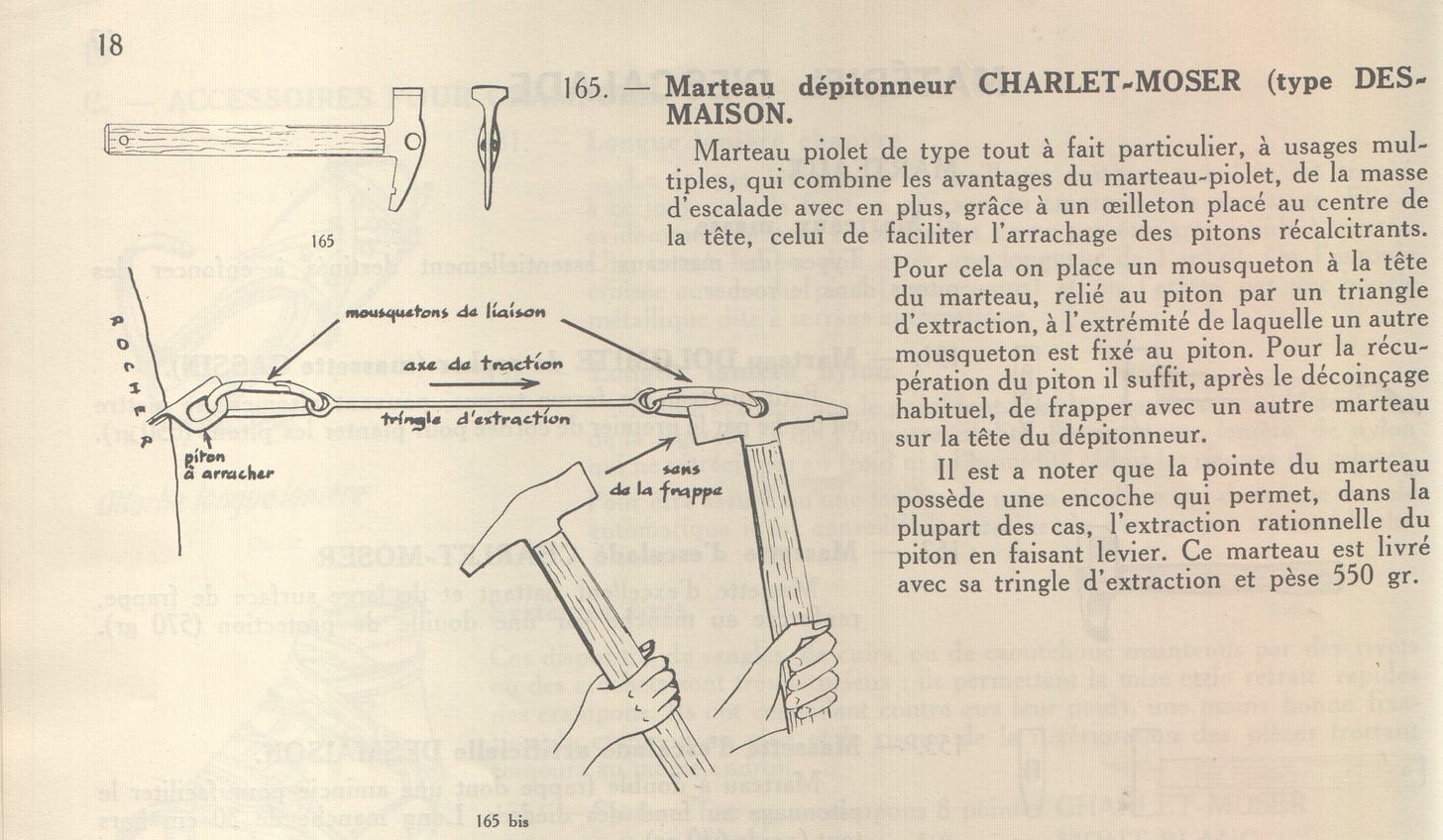

ROPE SCIENCE 1964
Kernmantle ropes for climbing, with a core and a sheath, and the right balance of handling, stretch, and strength was developed largely by European rope manufacturers. Kernmantle ropes were often known as “Perlon” ropes in the USA (Perlon is another type of Nylon 6-6 polymer made with a slightly different process to avoid patent violation). The early 1950s kernmantles for climbing could be considered experimental, and it wasn’t until the mid-1960s that kernmantle ropes became the best general-purpose climbing rope. Here, Eduoard Frendo explains rope properties and types at the time.
(translations and nylon rope development story TK)
This page to be continued and updated….
Early Pin Bin from Stephane:
USA Gear, 1965
1965 REI Catalog Courtesty Vertical Archeology

Ok, so how did we get here? Europe in the 1930s has already been covered, so let’s go back to the 1920s in the USA, to see how the climbing gear developed in USA and Canada (future post).



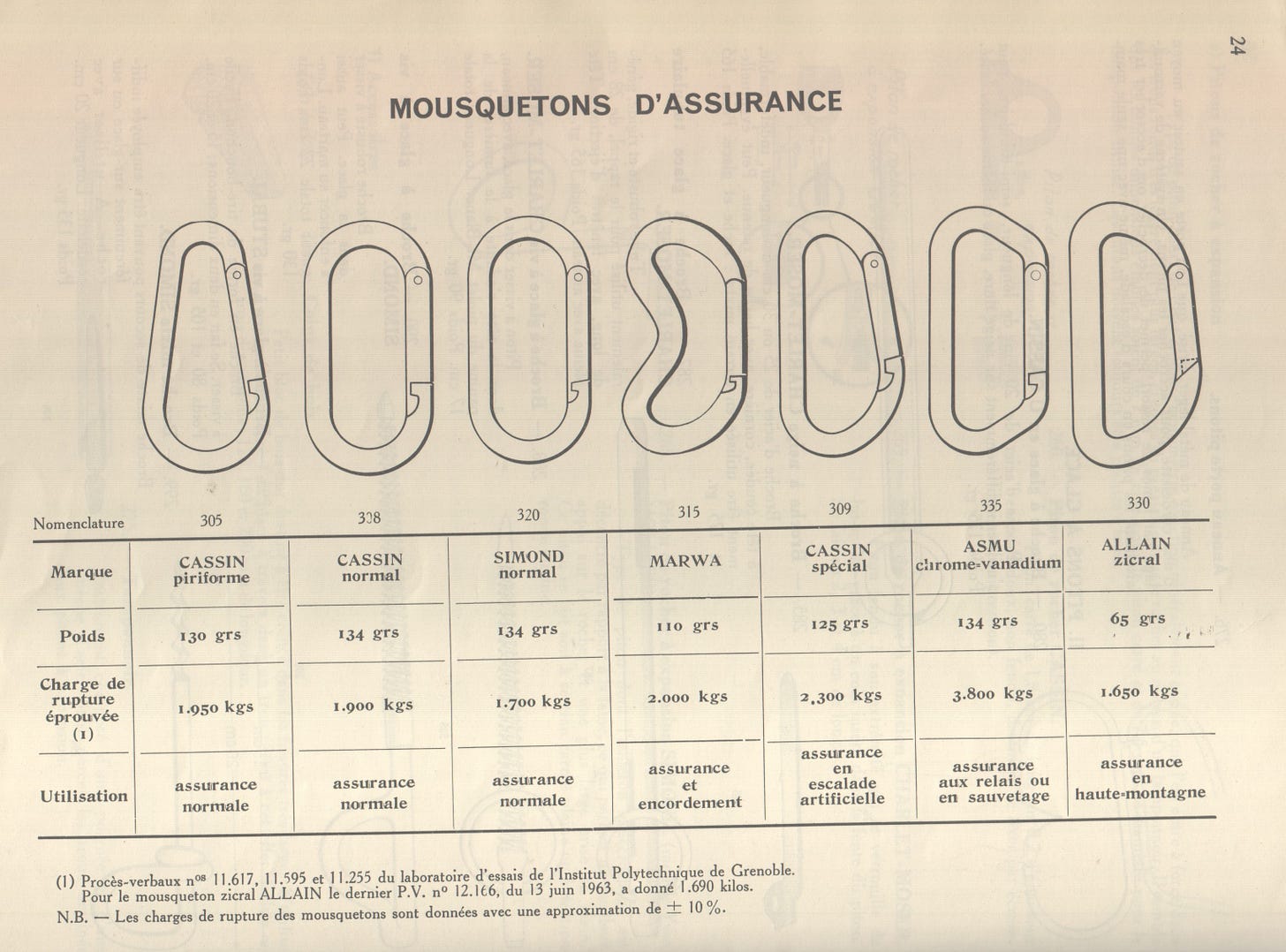
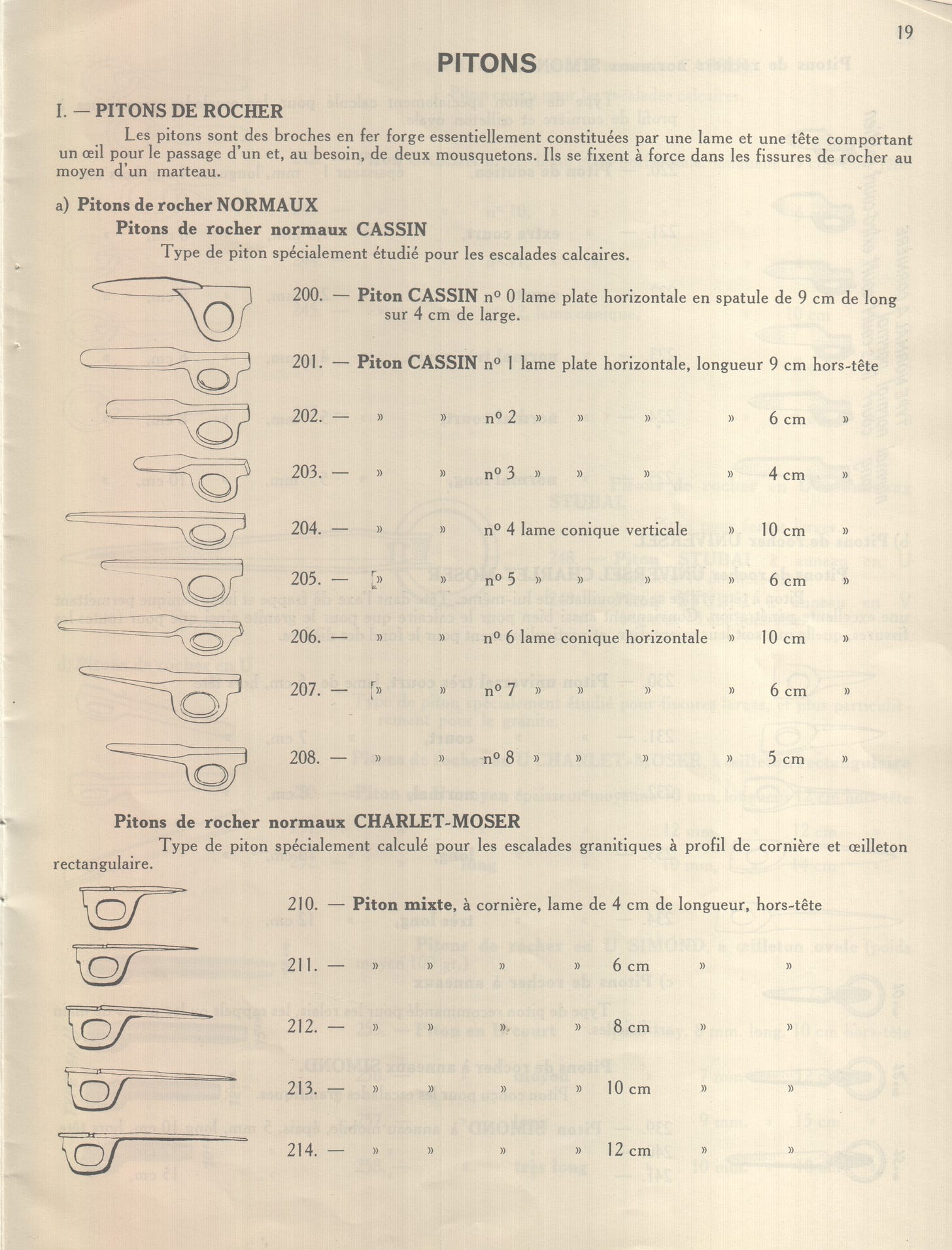
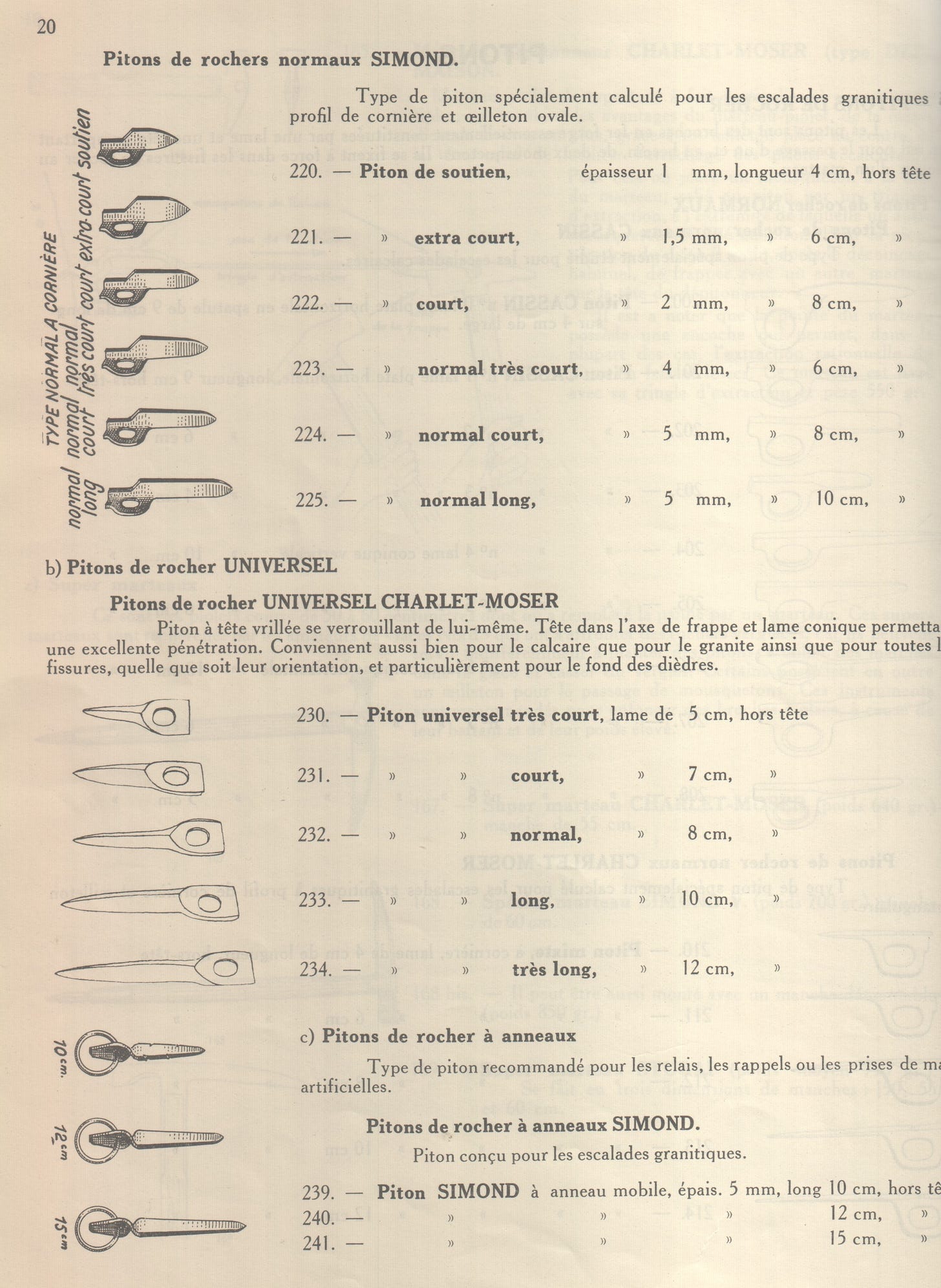

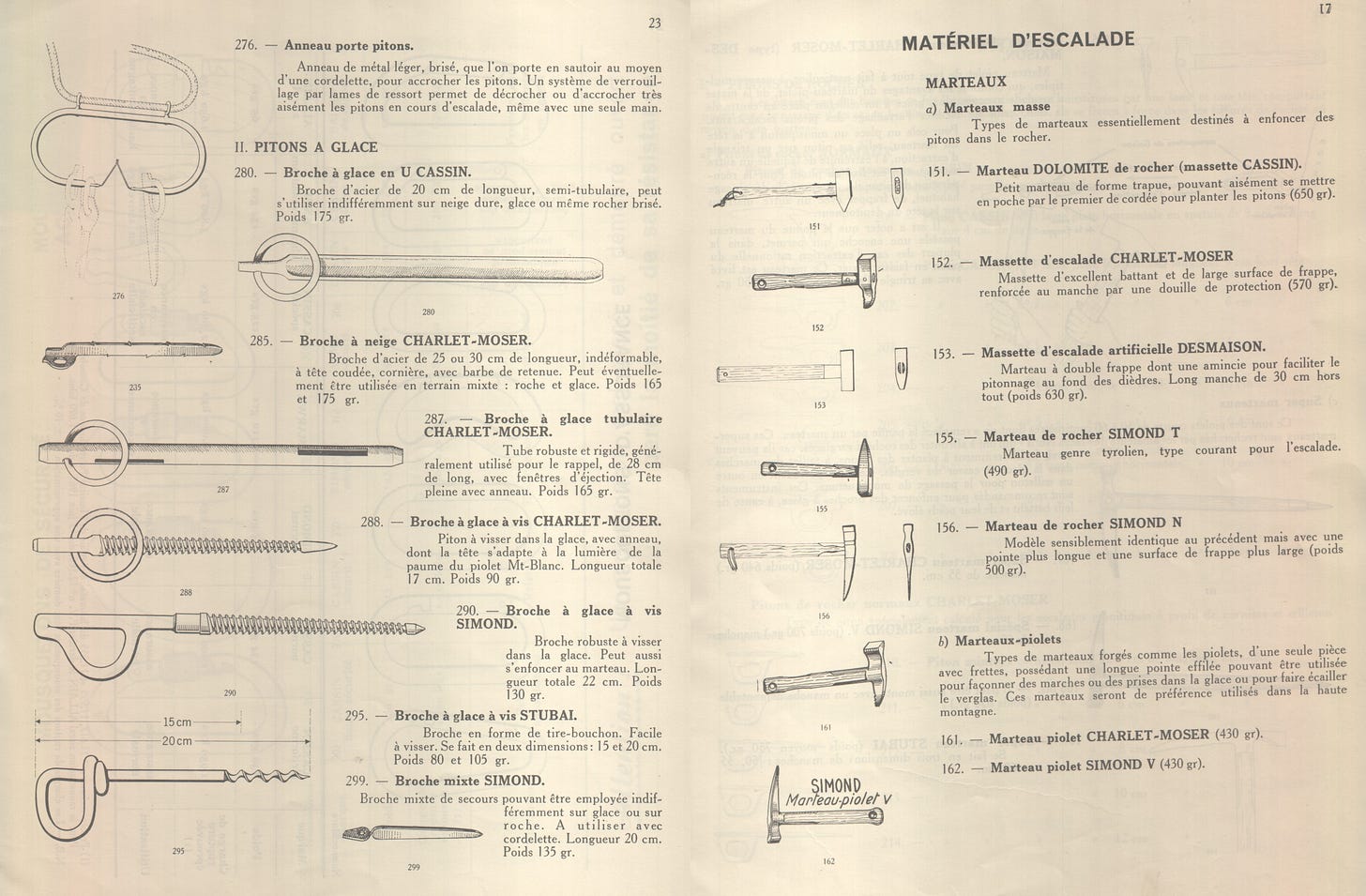

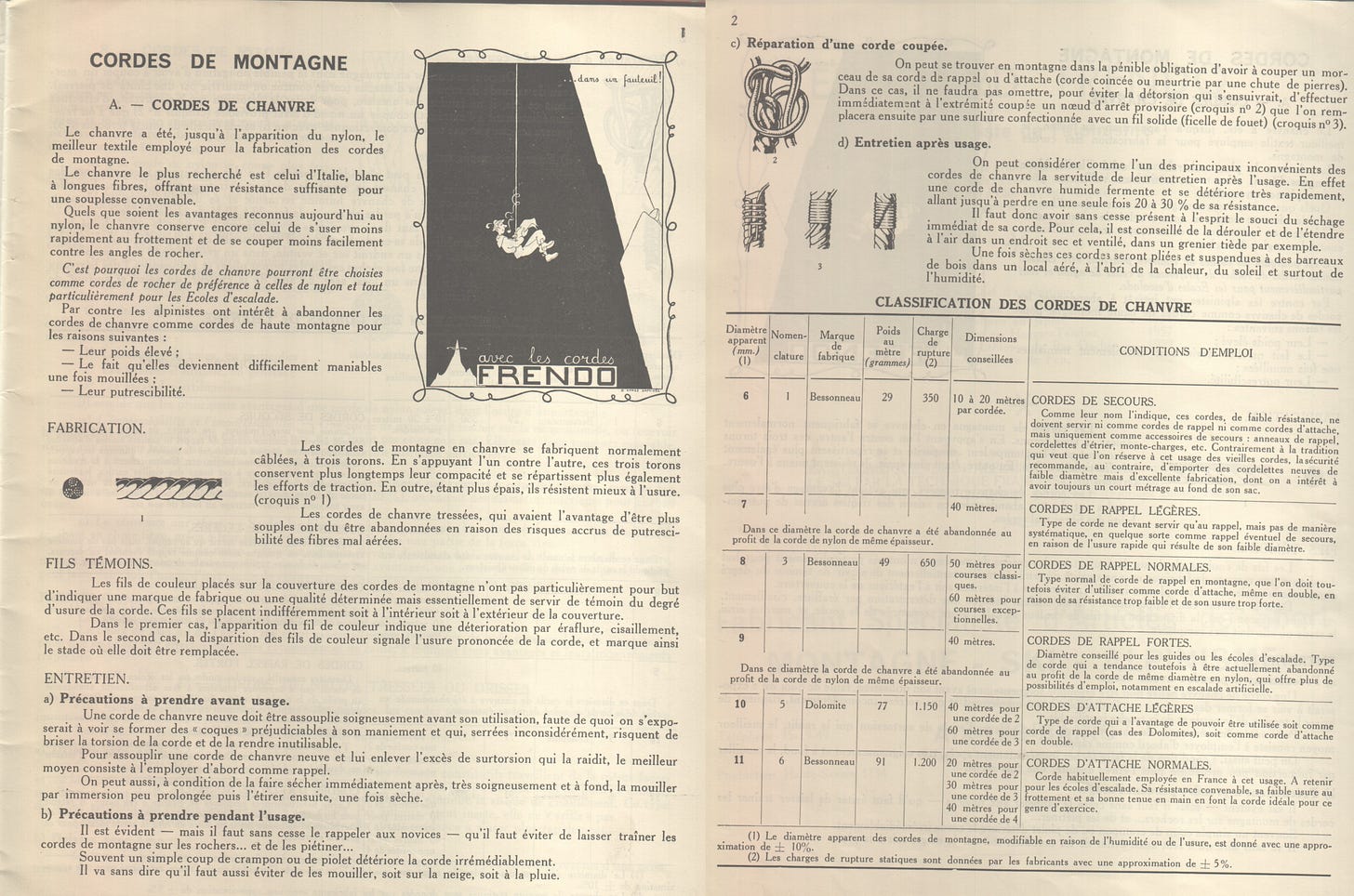




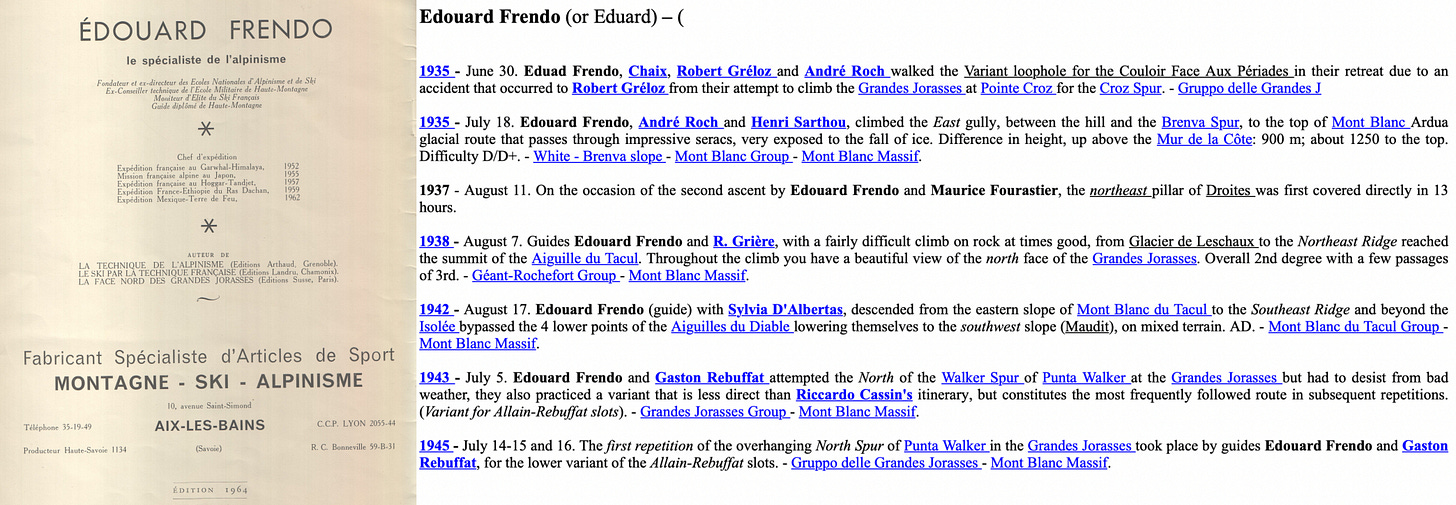



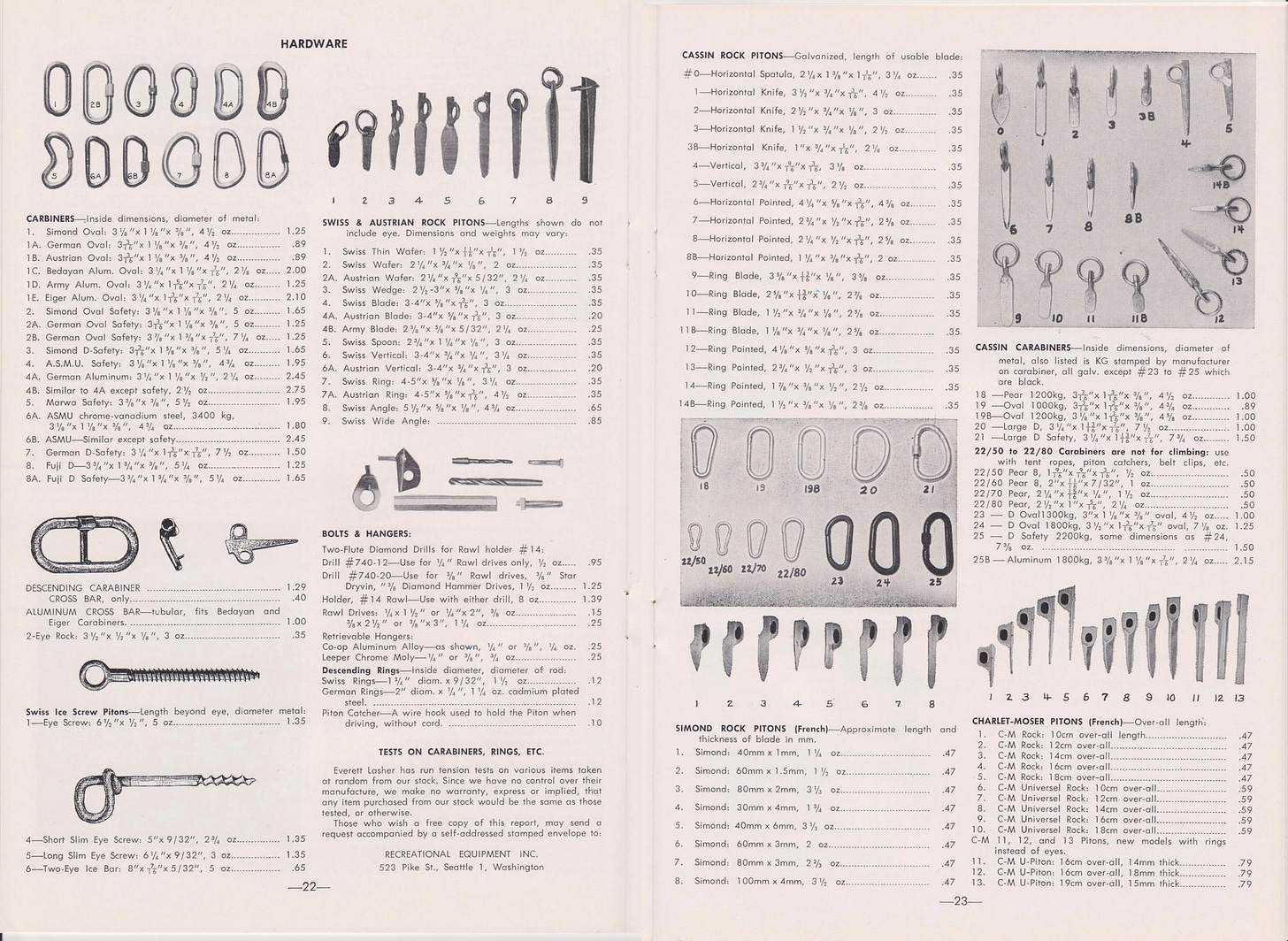




Fantastic history write up Duece! Knowing your⁰ background makes it timeless. I so wish I could relocate some of that past PVC gear. Oh, well...it leaft us all like the cave Jonsers decided too from recent passing away. Contact me to put it all into practice while the fish we have to fry are pretty significant by now, you know. -Chris Andrews